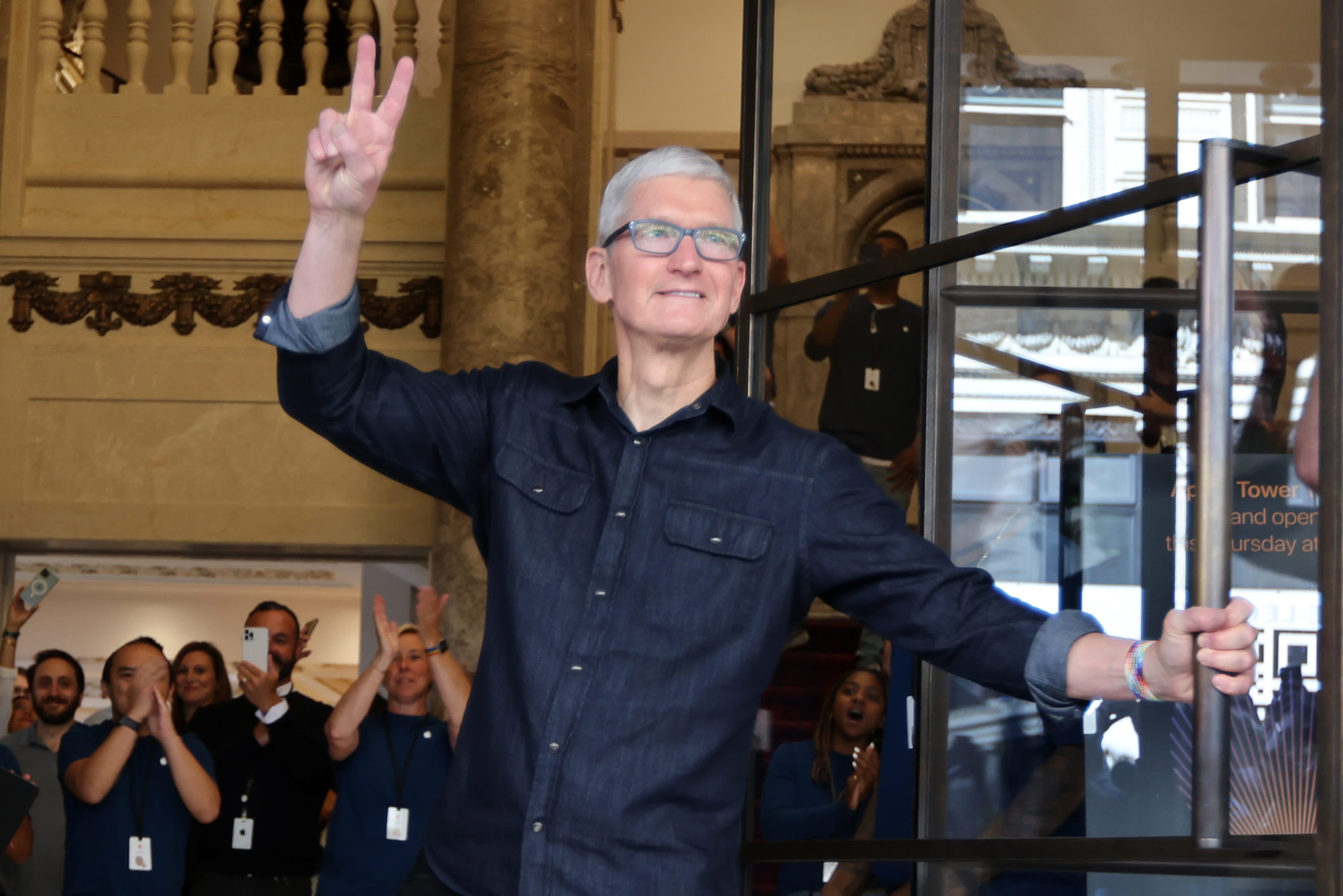
In its own way, Apple may have found a financial solution to the supply chain crises dogging manufacturers worldwide. After the latest set of Apple quarterly numbers, Wall Street analysts running the numbers say it’s possible to see how Apple can deliver double-digit profit growth without needing its manufacturing-driven hardware business, including iPhones, to grow at all.
Last week’s Q4 earnings report showed Apple’s $80 billion a year services business — now a Fortune 50 company by revenue all on its own — to be growing so fast that it can boost earnings per share by double digits annually, even if growth in its huge but narrower-margin iPhone business were to stall. With iPhones still growing, profits rose 20% in the first quarter of Apple’s fiscal year.
“The services margin is a major tailwind, regardless of what happens to the iPhone,” Wedbush analyst Dan Ives said. “Tim Cook and Cupertino steadied the ship. Tech stocks have been up ever since they reported.”
The numbers work like this.
Apple’s iPhone business is nearly 70% of its sales. Mac computer sales rose 25% in the last quarter on a much smaller base, while iPad sales declined. Services like iTunes and Apple Pay, and especially referral fees from Alphabet for sending iPhone’s Safari browser users to the Google search engine, are 16% of sales but 26% of gross profit. And their 24% fourth-quarter sales growth dwarfs the 9.2% that iPhone posted in a strong quarter, helped by a new edition of the iPhone and the ongoing migration of existing users to faster 5G technology.
Alphabet traffic acquisition costs (TAC), the metric used to show how much the company pays other websites to acquire traffic, came in higher than Wall Street expected at $13.43 billion in the search giant’s latest quarterly results, which were reported after the close on Tuesday.
Given that not every year brings a new iPhone, let alone a catalyst like the 5G transition, analysts went to work trying to figure out what the services growth portends for Apple’s future. And they like what they see.
“Apple’s ability to drive new customers, deepen penetration and introduce new services suggests that 15%-20% growth for the next few years may not be implausible,” Sanford C. Bernstein’s Toni Sacconaghi wrote in a note to clients. “This is a big deal – suggesting that services (30%+ of gross profits, potentially growing 20%, with expanding margins) + buybacks (3%-4% per year) could drive 10%+ earnings per share growth for Apple, even with Hardware/other products growing at 0%.”
Other analysts say their math works out close to the same way.
The services business can make Apple profit grow “high single digits with no growth in hardware,” said Angelo Zino of CFRA Research. Add in stock buybacks and the number can easily support double-digit earnings per share growth by reducing the number of outstanding shares over which Apple’s profit is spread.
“Margins in services are going to continue to expand,” Zino said. “The story for Apple is that 30% of the company is services and wearables. Young kids and users are growing up now on Apple’s platform. All that people 13 to 34 want is Apple products.”
Migrating the company to services has been among Apple’s top goals for years. Not only does the steadier services business insulate Apple’s earnings growth from the more cyclical manufacturing unit’s swings – a point brought home by the 30% decline in Apple stock in 2015-2016 as iPhone demand in China slowed – it also boosts the company’s stock multiple because software and internet services stocks routinely command high price to earnings multiples.
“The number of paid accounts on our digital content stores grew double digits and reached a new all-time high during the December quarter in every geographic segment,” Apple chief financial officer Luca Maestri said on the earnings conference call with analysts last week. “We now have more than 785 million paid subscriptions across the services on our platform, which is up 165 million during the last 12 months alone.”
There is the hard-to-quantify potential of Apple’s businesses for gaming-related wearables, the next big leg of a business that includes Apple’s Watch, AirPods and its Beats headphones, and for autonomous vehicles, which reportedly may not include an Apple-branded vehicle before 2025. Ives expects Apple’s virtual-reality headset to debut in fiscal 2023, with unit sales of 15 million out of the gate.
But Apple is now far enough along in its transition to grow on the services business alone, which Wedbush values at $1.5 trillion, even if Wall Street doesn’t expect it will necessarily have to do so.
The growth in hardware still has a ways to run. The average iPhone is now about three and a half years old, well above the two-year lifespan that used to be Apple’s norm, Ives said, priming the pump for a replacement cycle. That likelihood is reinforced by the arrival of 5G, he said, since only 10% to 15% of iPhones now in use are 5G-capable.
“We think sustainable iPhone growth for the next three years will be in the high single digits per year, because of pent-up demand and 5G,” Ives said.




